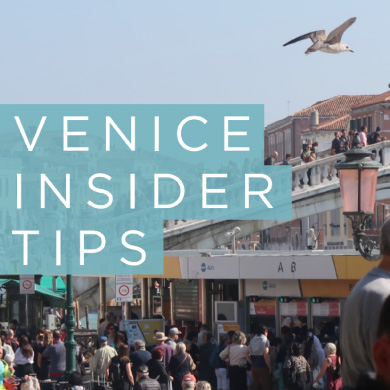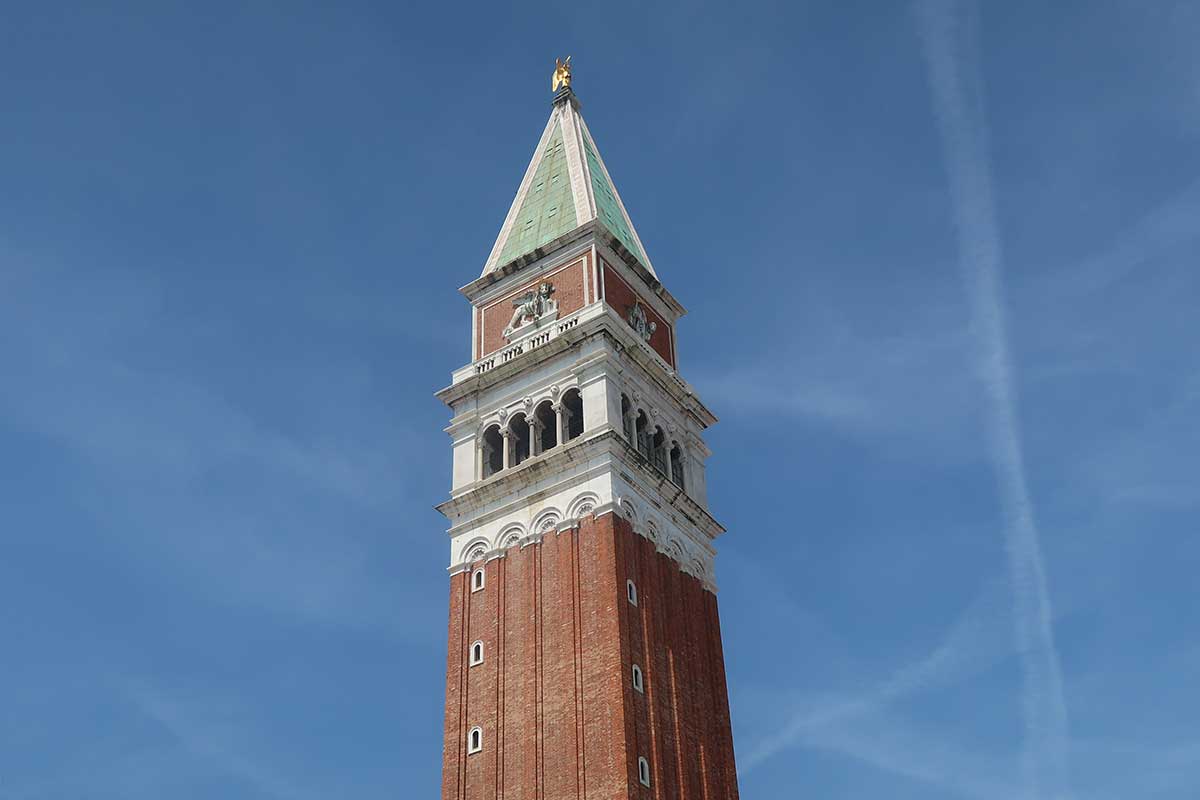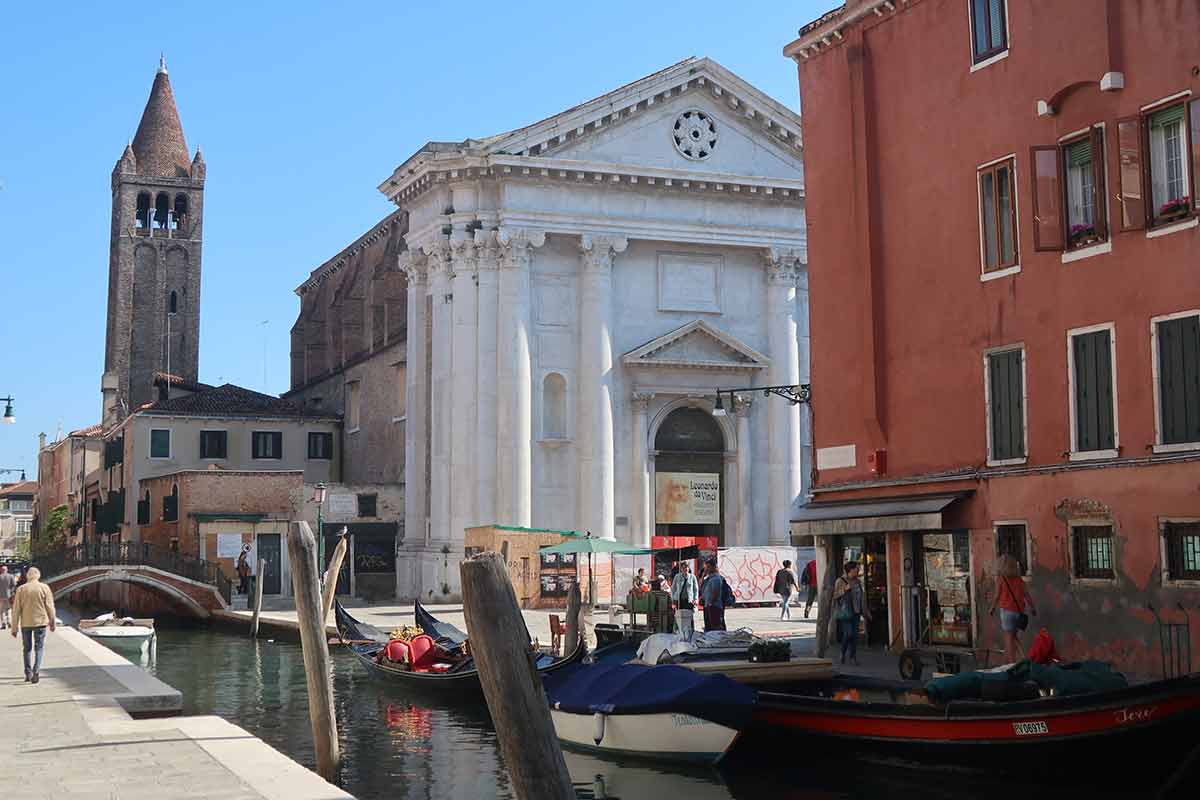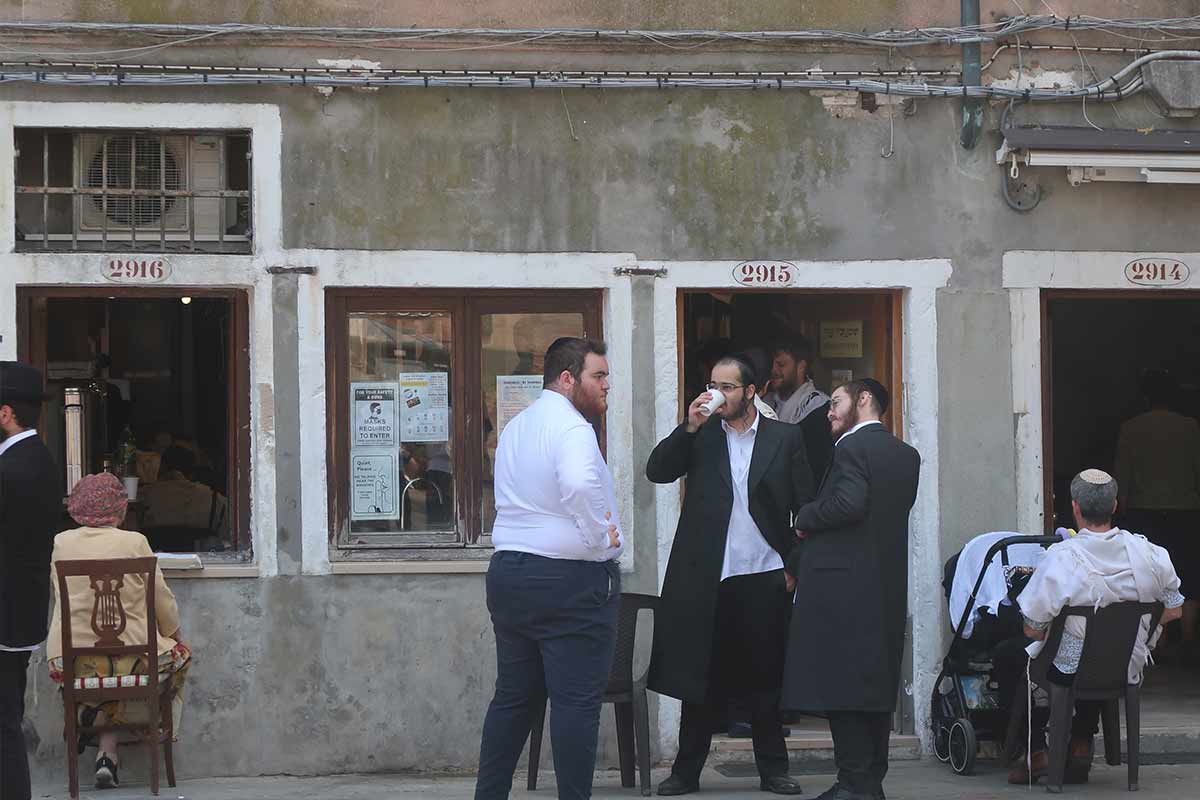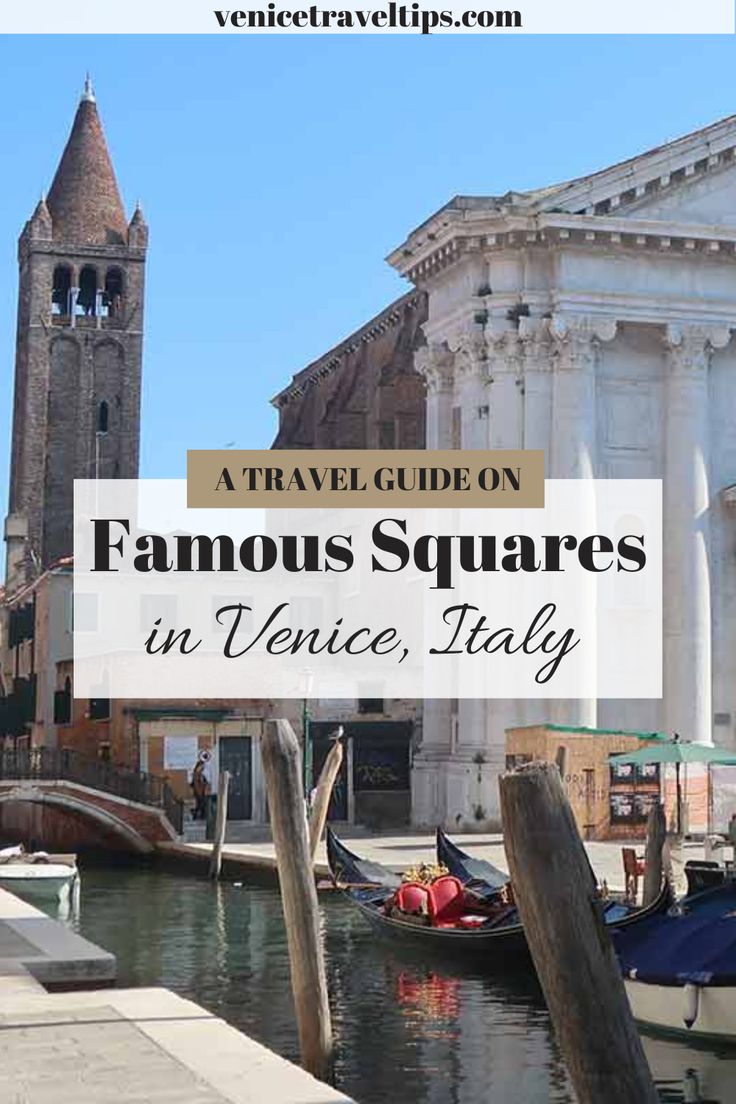Welcome to this guide that looks at some of the most famous squares in Venice.
No matter how many times you visit it, the city on the water which is home to hundreds of canals and bridges is a place where getting lost is a regular event!
Here there’s no other solution than following the yellow signs around the city since the GPS signal is poor. But don’t worry, you’ll be glad to know that getting lost in Venice is the best way to get to know the most authentic side of the city.
Think about it: is there anything better than escaping the obsessive flow of tourists and discovering the hidden and beautiful corners of Venice? I don’t think so!
Famous squares in Venice
Visiting the most famous squares in Venice is the best way to get a glimpse into the real Venice. But let’s first clarify something. In Venice, there’s only one square: Piazza San Marco. The other ‘squares’ are instead called campi (fields).
As the name suggests the ‘campi’ used to be agricultural land and space to graze animals. If we could travel back in time, this is where you could observe daily life passing by and important city events taking place.
I recently shared some famous bridges in Venice so now let’s view the unmissable and most famous squares in Venice that you can add to your itinerary.
Over the centuries, the campi have served many purposes, some were graveyards (today Venice’s graveyard is only based in the San Michele island), whilst most of them were farmland, had warehouses and wells for water supplies (or at least until the first aqueduct was built back in 1886).
Today, the campi are meeting places for locals, a space for children to play games after school and where you’ll find markets, restaurants and bars.
Map of The most Famous squares in Venice
See my map of the most important squares in Venice. The most famous squares in Venice, better known as campi, are scattered all around the historical city centre.
Every square has its history, and served specific purposes, often based on their particular location.
This is a map of the best campi you should visit during your stay. You can add this map to your phone and use it when you’ll be visiting Venice.
Famous squares in Venice
With no further ado, below you can find some useful information to read during your visit to the most famous squares in Venice.
Piazza San Marco
Piazza San Marco is the only main square of Venice. St. Mark’s Square has been defined by Napoleon as the ‘drawing room of Europe’ and over the past centuries, the square has always been the focal point around which the city’s life has revolved.
This square’s area is divided in three sectors: the main Piazza, the Piazzetta and the Piazzetta dei Leoncini. The first piazza is surrounded by the Procuratie Nove and Vecchie, the former lodgings of the procurators. The north side is occupied by the majestic Basilica di San Marco, the religious heart of the city.
On the nearby Piazzetta, you can find the Doge’s Palace, the ex-residence of the Doge of Venice (main chief magistrate). You can book a guided tour of the St. Mark’s Basilica (and Doge’s Palace) in advance to be able to skip the queue.
On the right side of the palace, you can spot the two columns of San Marco and San Todaro and on their right, the Biblioteca Nazionale Marciana.
Between the two squares, stands imperiously the St. Mark’s Campanile, which you can climb, and from where you can enjoy the best bird-eye view of Venice!
If you’re planning a visit to Venice, then it’s also worth knowing that in St. Mark’s Square, you can find Caffè Florian, the oldest cafè in the world and the Correr Museum, a museum about Venetian art and history.
Campo Santa Margherita
Campo Santa Margherita is one of the most famous squares in Venice and it’s located in the Dorsoduro district. This is a lively square during the day and at night time. There are a few shops like a bakery, a takeaway pizzeria and a fish market in the morning.
Both locals and tourists like to sit under the trees while eating a slice of pizza from Pizza al Volo or other Venetian street foods they find around the campo.
This campo is great for aperitivo after 5 pm, I recommend Osteria alla Bifora serving cicchetti accompanied by a nice glass of Prosecco or Spritz Aperol.
The area is quite alive around dinner time and after, when Campo Santa Margherita becomes the centre of Venetian nightlife: restaurants, bars, university students galore, but strictly not loud music (it’s forbidden!).
Campo Santo Stefano
Campo Santa Stefano or Campo Morosini is one of the biggest squares in Venice. It’s possible that you’ll walk through it on your way to the Gallerie dell’Accademia or Piazzale Roma and the railway station when arriving from St. Mark’s Square.
There are different historical palaces surrounding it, like Palazzo Morosini, named after the famous Venetian leader, and Palazzo Loredan. If you’re visiting Venice in December, you can also stroll around the Christmas market stalls, taste traditional Italian treats of this festivity and shop artisanal products.
Even during Carnival, there’s quite a lot going on here with theatre shows and colourful masks hanging all around. In case you need a break, in Campo Santo Stefano you can also stop in one of its bars with outdoor tables and have a drink before continuing your tour of the city.
Campo San Barnaba
Campo San Barnaba is located in the heart of the Dorsoduro district, on the path that leads from Piazzale Roma to the Accademia bridge.
This is one of my favourite campo in Venice, although it’s a very small square, it can really give you a sense of the Venetian lifestyle.
Here you can take picturesque pictures from the Ponte dei Pugni, with the beautiful bell tower of the San Barnaba church reflected in the canal water.
This is one of the most famous squares in Venice because of its unusual and characteristic Venetian market boat from where you can buy fresh fruits and vegetables.
The church houses a permanent exhibition of drawings for Leonardo da Vinci’s machines and makes an appearance in the movie Indiana Jones and the Last Crusade!
💡 Local Tip: The narrow streets departing from this campo are full of great restaurants. If you love herbal teas and infusions try the Beatrice Tea Room that counts on a vast selection of Chinese and Japanese teas.
The tea room has some space inside and a private garden where you can taste your favourite teas in a very relaxed atmosphere. There’s also a bed and breakfast called B&B Ca’ Fujiyama that offers double and queen rooms.
Campo Santa Maria Formosa
The Campo Santa Maria Formosa is one of the most painted and famous squares in Venice. You’ll find this campo by moving towards Arsenale, in the Castello district.
It’s not far from Piazza San Marco and the Rialto Bridge. Once a week a flea market takes place and in the center of the square you can’t help but admire the grandiose Church of Santa Maria Formosa surrounded by sumptuous palaces.
There are two former wells, one in the centre of the campo, where Venetians used to get their daily water supply. Not far from this campo, you can visit the Fondazione Querini Stampalia, a house museum with an interesting collection of Venetian sculptures, decorative arts and paintings.
Campo Dell’anzolo Rafael
A truly peaceful area, often empty. This campo is based in the Dorsoduro district, far from the main tourist crowds. Campo dell’Angelo Raffaele is the perfect place to take a break from the sun.
If visiting Venice on a particularly hot day and find shelter thanks to the shade offered by the Angelo Raffaele Church. In the middle of the campo you can clearly spot a well built at the behest of the family Arian.
The church features a double bell tower and a curious façade showing the angel Raffaele leading Tobias with the fish hand and his dog. This is the parable of our journey on Earth, during which animals and angels are like our life companions.
Campo Ghetto Nuovo
Campo Ghetto Nuovo, based in the Cannaregio neighbourhood is one of the most famous squares in Venice and the largest in the Jewish Ghetto. The campo is surrounded by late medieval buildings and it has a long and tormented story.
In fact, the Jewish Ghetto has existed since 1516 when the Doge decreed that all Jews must live in this part of the city. At that time, most of the Venetian Jewish population were doctors, usurers and traders.
Then in 1797, Napoleon Bonaparte removed any restrictions in place, but Campo Ghetto Nuovo still seems to be a place separated from the rest of the city.
Here you can visit synagogues, eat in well-renowned kosher restaurants, and get to know the Cannaregio and Ghetto’s story (accompanied by a local guide). During the tour, you’ll also have the chance to taste some street food and Venetian dishes from delis and bakeries.
💡 Local Tip: Try kosher and traditional Venetian pastries and biscuits from the bakery Giovanni Volpe. I recommend the Esse, Zaeti and Bussolai biscuits.
Campo Della Pescaria
The Campo Della Pescaria is one of the most famous squares in Venice because it’s where the Rialto fish market takes place. Based in the San Polo district, this is one of the oldest areas of the city where most trade and economic activities were concentrated since Venice’s origins.
This campo overlooks the Grand Canal facilitating replenishment and sales operations. The fish market is very busy since the early hours of the day because the Venetian restauratuers wants to get the best fresh fish and seafood of the lagoon.
The historical building under which you can walk around the market stalls is the traditional covered market architecture in modern Gothic Venetian style that dates back to the start of the 20th century. Why not try this tour of the Rialto Fish Market which is perfect for learning about its history and Venetian cuisine with a guide?
Campo San Francesco Della Vigna
This is one of the most peaceful squares of Venice, thanks to its location in the Castello district, far away from the busiest attractions and most frequented streets of the city.
This campo has been named after the San Francesco convent based here and the vineyard (vigna in Italian) that still grows around the monastery. This vineyard is the oldest in Venice where more recently Glera and Malvasia grapes are cultivated.
From this campo, you can visit the St. Francis church and the public library that preserves and catalogs an impressive ancient and modern book collection owned by the Saint Anthony of the Minor Friars.
Campo San Giacomo Dell’Orio
Campo San Giacomo dell’Orio is one of the most famous squares in Venice, particularly frequented by Venetians. This campo gives you a glimpse into Venice’s daily life, as you can always find children playing or people chatting from the outdoor tables of the bars overlooking the square.
The main historical building that also gave its name to the campo is the Church of San Giacomo dall’Orio, one of the city’s oldest churches.
This is also a big campo that lends itself well for city events. By the end of July, if you’re around here make sure to join the patron saint celebrations with music and dance shows, during the Festa di San Giacomo dell’Orio.
Got travel insurance for Venice?
World Nomads offers simple and flexible travel insurance. Buy at home or while travelling and claim online from anywhere in the world.
Famous squares in Venice
Now you know the most famous squares in Venice. It’s crucial to remember that the only real square in Venice is St. Mark’s Square and the rest are called campi.
Each Venetian campo played one or more roles for the city and always been meeting places for Venetians. Today you can walk through famous and buzzing campi like Campo Santa Margherita, a meeting point for young people or a very quiet campi like Campo San Francesco Della Vigna.
That all for this guide to some of the famous squares in Venice, I hope you enjoy exploring both types of campi during your time in Venice and invite you to read my 2 days in Venice itinerary to get ideas on how to have the perfect trip in Venice.
📌 Like this article? Click to Pin it…
If you found this Venice travel guide helpful, feel free to buy me a virtual coffee here.
“Dear traveller! Some links in this post contain affiliate links. Meaning, if you click through and make a tour booking or reserve a hotel, I may earn a small commission at no additional cost to you. Your support means a lot to me and helps me to keep creating and maintaining the quality of this site for you.”

